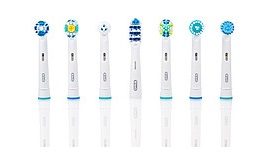The Precarious Cliff of Gum Recession: How Far Can Gums Recede Before Teeth Take the Plunge?
The Hidden Threat Beneath the Gumline
In the world of oral health, gum recession plays the role of a silent adversary, slowly creeping up on the unsuspecting victim. It’s akin to soil erosion around the base of a tree: quietly, yet persistently, it undermines the foundation until the structure is compromised. Gum recession is this erosion in the dental realm, gradually exposing more of the tooth or its root, setting the stage for a cascade of potential oral health issues.
Root Causes: Unearthing the Origins of Gum Recession
The journey towards gum recession is paved with a variety of factors, each contributing in its own unique way. Aggressive brushing, while seemingly a mark of diligence, can in fact be a one-way ticket to receding gums. Periodontal disease sneaks in like a thief in the night, targeting the support structures of the teeth. Genetics, too, play a role, with some individuals genetically predisposed to thinner, more vulnerable gum tissue. Other contributors include poor dental hygiene, hormonal fluctuations, and even lifestyle choices such as piercings in the oral cavity, each adding a layer of risk to the gum recession conundrum.
Navigating the Danger Zone: Recognizing the Red Flags
As gums recede, they don’t just detract from the aesthetic appeal of a smile; they sound the alarm for underlying oral health battles. Exposed roots are prone to decay, sensitive to temperature fluctuations, and susceptible to further gum disease. The pivotal question, then, becomes: At what point does gum recession lead to tooth loss? This progression is not straightforward but is influenced by the extent of care, management of the condition, and the unique dental anatomy of the individual.
Gauging the Retreat: A Closer Look at Gum Recession Stages
Gum recession is measured in millimeters, from the original gumline to the current position of the gum tissue.
- Mild Recession: This initial stage, involving 1-2 mm of exposure, can often be managed with prompt and appropriate care.
- Moderate Recession: With 3-4 mm of recession, the threat to oral health becomes more pronounced, as does the risk of root damage and sensitivity.
- Severe Recession: At 5 mm or more, the situation is grave, signaling significant bone loss and a looming threat of tooth loss.
The Battle Plan: Strategic Measures to Counter Gum Recession
Tackling gum recession requires a multifaceted approach, blending changes in daily oral care practices with professional dental interventions.
- Soft Touch: Transition to a soft-bristled toothbrush and embrace a gentler, more circular brushing technique to protect your gumline.
- Dental Vigilance: Regular dental appointments are crucial for monitoring gum health and intervening before minor issues escalate into major concerns.
- Oral Hygiene Overhaul: A rigorous routine, focusing on brushing, flossing, and possibly the use of an antimicrobial mouthwash, is essential in combating the leading cause of gum recession—periodontal disease.
Lifestyle Adjustments: The Path to Gum Preservation
Beyond the basics of brushing and flossing, lifestyle changes play a pivotal role in mitigating the risks of gum recession.
- The End of Smoking: Tobacco use is a notorious accelerator of gum recession and periodontal disease. Eliminating smoking can dramatically enhance oral health outcomes.
- Bruxism Awareness: For those who grind their teeth, a custom-fitted mouthguard can be a game-changer, protecting both gums and teeth from the strain of nocturnal grinding.
- Nutritional Fortification: A diet rich in vitamins and minerals supports overall health and fortifies the body’s defenses against infection and inflammation, indirectly benefiting gum health.
When Restoration Is Required: Exploring Surgical Solutions
In cases of advanced gum recession, surgical intervention may offer a beacon of hope. Procedures such as gum grafting aim to replenish lost gum tissue, thereby providing teeth with the necessary support to remain stable and healthy.
Embracing a Proactive Stance: The Key to Gum Retention
The narrative of gum recession is not one of inevitable decline but rather a call to action for heightened awareness and proactive care. By understanding the factors contributing to recession, recognizing the early signs, and adopting a comprehensive approach to oral health, individuals can significantly alter the course of their gum health trajectory.
Collaborative Care: The Dentist-Patient Partnership
Optimal outcomes in battling gum recession are often achieved through a partnership between patient and dental professional. This collaboration involves not only regular dental check-ups and cleanings but also patient education on the best practices for home care and lifestyle adjustments that can minimize risk factors.
Technological Advancements: Aiding the Fight Against Recession
The field of dentistry continues to evolve, with technological advancements offering new tools and techniques for diagnosing, treating, and preventing gum recession. From laser therapy to enhance tissue regeneration to innovative materials for grafting, these advancements are expanding the arsenal available to combat gum recession.
The Horizon of Hope: Advancing Beyond Recession
As the understanding of gum recession deepens, so too does the potential for effective management and prevention. With a commitment to regular dental care, adherence to best practices in oral hygiene, and a willingness to embrace necessary lifestyle changes, the threat posed by gum recession can be significantly mitigated.
Conclusion: The Journey to Gum Health Is in Your Hands
The story of gum recession is a reminder of the fragile balance within our oral ecosystem. By adopting a vigilant, proactive approach to oral health, individuals can protect their gums, preserve their teeth, and maintain a smile that’s not only beautiful but robustly healthy. The journey to overcoming gum recession is a collaborative, continuous effort—one that promises a future where smiles are not only preserved but flourish.

